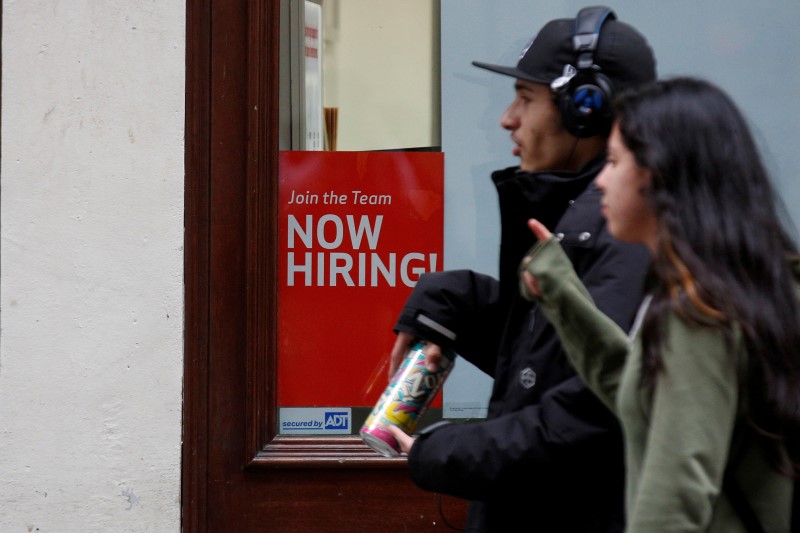Investing.com - The U.S. economy created more jobs than expected in March, sending a sigh of relief through markets after recent signs of weakness.
Nonfarm payrolls (NFP) rose by 196,000 in March, above consensus expectations for 175,000, while the jobless rate held steady as expected at 3.8%..
March’s job creation restored confidence in the state of the labor market after February’s weak increase in posts. Wednesday’s report from payrolls processor ADP, which showed the U.S. economy added the fewest private sector jobs in 18 months during March, had also been a source of concern.
In an immediate reaction, U.S. futures extended gains after the release with S&P 500 futures up 0.4% compared to 0.1% ahead of the report. The U.S. dollar index, which measures the greenback against a basket of major currencies, gained some support, turned positive although it remained near the unchanged mark.
In another positive sign for stocks, average hourly earnings grew 3.2% on an annualized basis, slowing from the prior month’s reading of 3.4%. Economists had expected no change.
The slowdown in wage inflation supported the Federal Reserve’s recent decision to be “patient” with further policy tightening.
The Fed left interest rates unchanged in its March policy decision and said it was no longer projecting hikes in 2019. At the same time, it announced it will stop shrinking its bond portfolio in September.
Both dovish moves imply that policymakers have become more concerned about the economic outlook.
Some analysts suggest that the next change to rates could be a cut if fears over the U.S. and global economies, plagued by ongoing trade uncertainties, become a reality.
Sluggish global growth, particularly in China and Europe, coupled with volatile financial markets and subdued inflation have supported the Fed’s “patient” stance.
